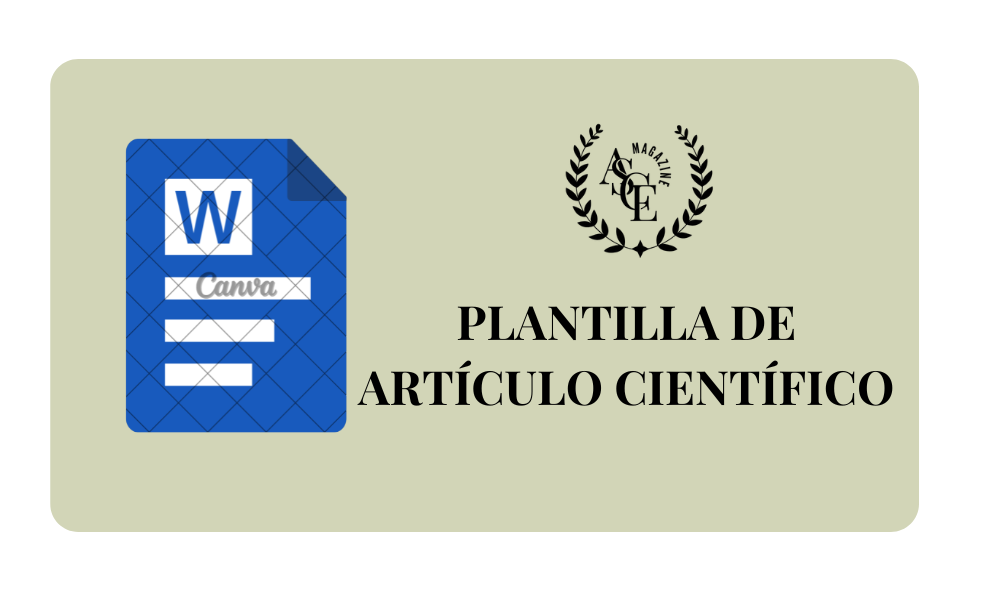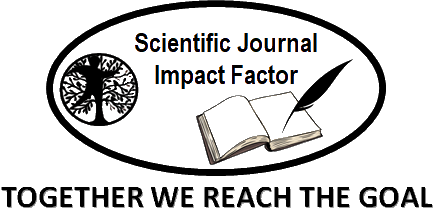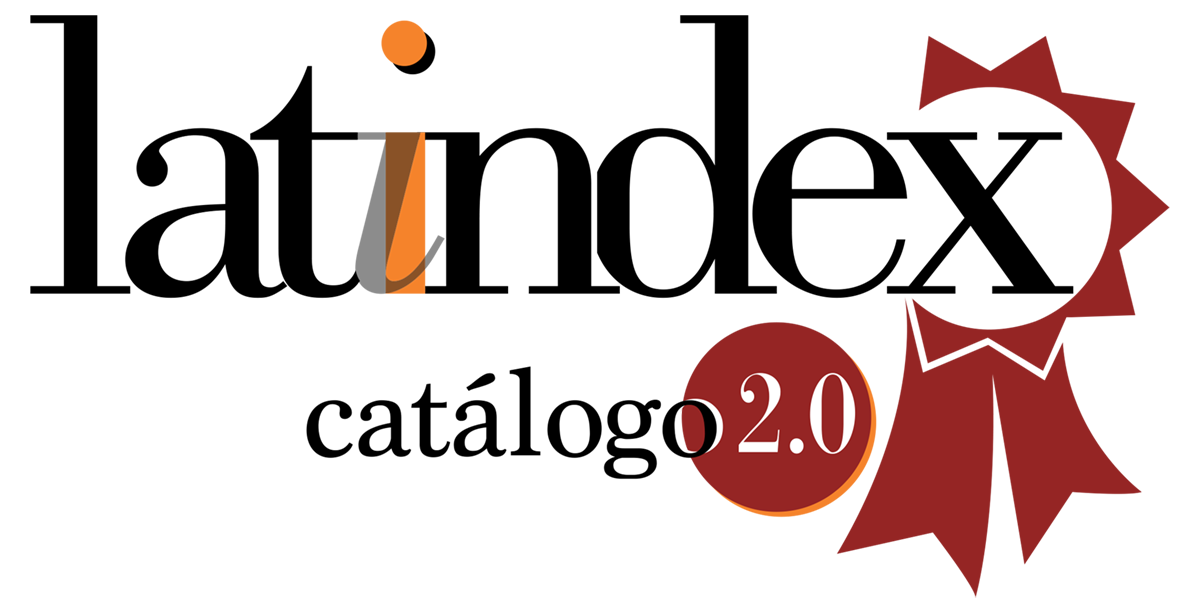Modeling urban runoff and its impact on water quality under climate change scenarios
DOI:
https://doi.org/10.70577/asce.v4i4.496Keywords:
Climate; Runoff; Erosion; Hydrology; Models; PredictionAbstract
Cities are becoming increasingly impermeable, and with climate change, more frequent intense rainfall is expected. This intensifies runoff, carrying pollutants into receiving water bodies. Understanding how these impacts will evolve is necessary for planning green infrastructure and sustainable drainage systems. Therefore, the use of models would allow for evaluation how extreme events predicted by climate change will modify urban runoff and its pollutant load (nutrients, metals, sediments) in a specific urban watershed based on changes in runoff volume, peak flows, and concentrations of nitrogen (NO₃⁻, NH₄⁺), phosphorus, total suspended solids (TSS), and dissolved metals (Pb, Zn). Independent variables: precipitation intensity (current and future scenarios). In this regard, a systematic review of 180 articles was conducted using the Scopus, PubMed, SciELO, Latindex, Redalyc, and Google Scholar databases. Twenty-four articles were selected that address how modeling can estimate urban runoff and its impact on water quality under climate change scenarios. The results showed that predictive models are becoming increasingly effective in estimating runoff, the increase of which is a product of environmental degradation resulting from climate change. Estimating runoff would help in making decisions to prevent damage to infrastructure and to the safety of people.
Downloads
References
Al-Areeq, A. M., & Aljundi, I. H. (2025). Evaluating the impact of check dam construction on runoff processes in Al-Dayer watershed using a physically-based hydrologic model. Geomatics, Natural Hazards and Risk, 16(1), 2451737. https://doi.org/10.1080/19475705.2025.2451737?urlappend=%3Futm_source%3Dresearchgate DOI: https://doi.org/10.1080/19475705.2025.2451737
Alshammari, E., Rahman, A. A., Ranis, R., Seri, N. A., & Ahmad, F. (2024). Investigation of Runoff and Flooding in Urban Areas based on Hydrology Models: A Literature Review. International Journal of Geoinformatics, 20(1), 99-119. https://doi.org/10.52939/ijg.v20i1.3033 DOI: https://doi.org/10.52939/ijg.v20i1.3033
Amini, A., Dolatshahi, M., & Kerachian, R. (2024). Real-time rainfall and runoff prediction by integrating BC-MODWT and automatically-tuned DNNs: Comparing different deep learning models. Journal of Hydrology, 631, 130804. https://doi.org/10.1016/j.jhydrol.2024.130804 DOI: https://doi.org/10.1016/j.jhydrol.2024.130804
Asadi, S., Jimeno-Sáez, P., López-Ballesteros, A., & Senent-Aparicio, J. (2024). Comparison and integration of physical and interpretable AI-driven models for rainfall-runoff simulation. Results in Engineering, 24, 103048. https://doi.org/10.1016/j.rineng.2024.103048 DOI: https://doi.org/10.1016/j.rineng.2024.103048
Baig, A., Atif, S., & Tahir, A. (2024). Urban development and the loss of natural streams leads to increased flooding. Discover Cities, 1(1), 9. https://doi.org/10.1007/s44327-024-00010-w DOI: https://doi.org/10.1007/s44327-024-00010-w
Basher, S. A., & Sadorsky, P. (2025). How important are climate change risks for predicting clean energy stock prices? Evidence from machine learning predictive modeling and interpretation. Journal of Climate Finance, 10, 100058. https://doi.org/10.1016/j.jclimf.2024.100058 DOI: https://doi.org/10.1016/j.jclimf.2024.100058
Bazazzadeh, H., Hoseinzadeh, S., Mohammadi, M. M., & Garcia, D. A. (2025). AI-aided surrogate model for prediction of HVAC optimization strategies in future conditions in the face of climate change. Energy Reports, 13, 1834-1845. https://doi.org/10.1016/j.egyr.2025.01.033 DOI: https://doi.org/10.1016/j.egyr.2025.01.033
Borah, G. (2025). Urban water stress: climate change implications for water supply in cities. Water Conservation Science and Engineering, 10(1), 20. https://doi.org/10.1007/s41101-025-00344-5 DOI: https://doi.org/10.1007/s41101-025-00344-5
Elshewey, A. M., Jamjoom, M. M., & Alkhammash, E. H. (2025). An enhanced CNN with ResNet50 and LSTM deep learning forecasting model for climate change decision making. Scientific Reports, 15(1), 14372. https://doi.org/10.1038/s41598-025-97401-9 DOI: https://doi.org/10.1038/s41598-025-97401-9
Fathi, M. M., Al Mehedi, M. A., Smith, V., Fernandes, A. M., Hren, M. T., & Terry Jr, D. O. (2025). Evaluation of LSTM vs. conceptual models for hourly rainfall runoff simulations with varied training period lengths. Scientific Reports, 15(1), 15820. https://doi.org/10.1038/s41598-025-96577-4 DOI: https://doi.org/10.1038/s41598-025-96577-4
Frincu, R. M. (2025). Artificial intelligence in water quality monitoring: A review of water quality assessment applications. Water Quality Research Journal, 60(1), 164-176. https://doi.org/10.2166/wqrj.2024.049 DOI: https://doi.org/10.2166/wqrj.2024.049
Gacu, J. G., Kantoush, S. A., Nguyen, B. Q., Solidum, R. U., & Balderama, O. F. (2025). Challenges and approaches in sediment management in the Philippines: a review of current research, practices, and proposed countermeasures. Natural Hazards, 1-37. https://doi.org/10.1007/s11069-025-07627-z DOI: https://doi.org/10.1007/s11069-025-07627-z
Gavrilaș, S., Burescu, F. L., Chereji, B. D., & Munteanu, F. D. (2025). The Impact of Anthropogenic Activities on the Catchment’s Water Quality Parameters. Water, 17(12), 1791. https://doi.org/10.3390/w17121791?urlappend=%3Futm_source%3Dresearchgate DOI: https://doi.org/10.3390/w17121791
Ghosh, P., Sudarsan, J. S., & Nithiyanantham, S. (2024). Nature-based disaster risk reduction of floods in Urban Areas. Water Resources Management, 38(6), 1847-1866. https://doi.org/10.1007/s11269-024-03757-4 DOI: https://doi.org/10.1007/s11269-024-03757-4
Guo, Q., He, Z., Wang, Z., Qiao, S., Zhu, J., & Chen, J. (2024). A performance comparison study on climate prediction in Weifang City using different deep learning models. Water, 16(19), 2870.
https://doi.org/10.3390/w16192870?urlappend=%3Futm_source%3Dresearchgate DOI: https://doi.org/10.3390/w16192870
Habibu, S., Idris, M. B., Birniwa, A. H., Abdullahi, S. S. A., Tukur, A. I., & Gumel, S. M. (2025). Environmental impact and management of industrial effluents. In Biorefinery of Industrial Effluents for a Sustainable Circular Economy (pp. 11-25). Elsevier. https://doi.org/10.1016/B978-0-443-21801-9.00002-1 DOI: https://doi.org/10.1016/B978-0-443-21801-9.00002-1
Hamdan, A., Ibekwe, K. I., Etukudoh, E. A., Umoh, A. A., & Ilojianya, V. I. (2024). AI and machine learning in climate change research: A review of predictive models and environmental impact. World Journal of Advanced Research and Reviews, 21(1), 1999-2008. https://doi.org/10.30574/wjarr.2024.21.1.0257 DOI: https://doi.org/10.30574/wjarr.2024.21.1.0257
Heo, S., Park, S., & Lee, D. K. (2025). Evaluating thresholds: the impact of terrain modifications on landslide susceptibility in a mountainous city. Geomatics, Natural Hazards and Risk, 16(1), 2493211. https://doi.org/10.1080/19475705.2025.2493211?urlappend=%3Futm_source%3Dresearchgate DOI: https://doi.org/10.1080/19475705.2025.2493211
Houénafa, S. E., Johnson, O., Ronoh, E. K., & Moore, S. E. (2025). Hybridization of Stochastic Hydrological Models and Machine Learning Methods for Improving Rainfall-Runoff Modelling. Results in Engineering, 104079. https://doi.org/10.1016/j.rineng.2025.104079 DOI: https://doi.org/10.1016/j.rineng.2025.104079
Jawale, P. S., & Thube, A. D. (2025). Rainfall-runoff modeling of urban floods using GIS and HEC-HMS. MethodsX, 15, 103437. https://doi.org/10.1016/j.mex.2025.103437 DOI: https://doi.org/10.1016/j.mex.2025.103437
Karagiannakis, G., Panteli, M., & Argyroudis, S. (2025). Fragility modeling of power grid infrastructure for addressing climate change risks and adaptation. Wiley Interdisciplinary Reviews: Climate Change, 16(1), e930. https://wires.onlinelibrary.wiley.com/doi/10.1002/wcc.930?af=R DOI: https://doi.org/10.1002/wcc.930
Kumar, A., Kumar, M., Sharma, N. K., Dhyani, B. L., & Mandal, U. (2025). Assessment and estimation of runoff and soil loss using novel machine learning techniques for conservation bench terraces. Science of The Total Environment, 973, 179093. https://doi.org/10.1016/j.scitotenv.2025.179093 DOI: https://doi.org/10.1016/j.scitotenv.2025.179093
Li, H., Zhang, C., Chu, W., Shen, D., & Li, R. (2024). A process-driven deep learning hydrological model for daily rainfall-runoff simulation. Journal of Hydrology, 637, 131434. https://doi.org/10.1016/j.jhydrol.2024.131434 DOI: https://doi.org/10.1016/j.jhydrol.2024.131434
Liu, J., Li, M., Li, R., Shalamzari, M. J., Ren, Y., & Silakhori, E. (2025). Comprehensive assessment of drought susceptibility using predictive modeling, climate change projections, and land use dynamics for sustainable management. Land, 14(2), 337. https://doi.org/10.3390/land14020337?urlappend=%3Futm_source%3Dresearchgate.net%26medium%3Darticle DOI: https://doi.org/10.3390/land14020337
Luo, Y., Zhang, K., Wang, Y., Wang, S., Wu, N., Li, S., ... & Bao, H. (2024). iRainSnowHydro v1. 0: A distributed integrated rainfall-runoff and snowmelt-runoff simulation model for alpine watersheds. Journal of Hydrology, 645, 132220. https://doi.org/10.1016/j.jhydrol.2024.132220 DOI: https://doi.org/10.1016/j.jhydrol.2024.132220
Madhavi, M., Kolikipogu, R., Prabakar, S., Banerjee, S., Maguluri, L. P., Raj, G. B., & Balaram, A. (2024). Experimental evaluation of remote sensing–based climate change prediction using enhanced deep learning strategy. Remote Sensing in Earth Systems Sciences, 7(4), 642-656. https://doi.org/10.1007/s41976-024-00152-w DOI: https://doi.org/10.1007/s41976-024-00152-w
Mansida, A., & Bancong, H. (2025). A Bibliometric Analysis of Trends in Rainfall-Runoff Modeling Techniques for Urban Flood Mitigation (2005-2024). Results in Engineering, 104927. https://doi.org/10.1016/j.rineng.2025.104927 DOI: https://doi.org/10.1016/j.rineng.2025.104927
Münzel, T., Hahad, O., Lelieveld, J., Aschner, M., Nieuwenhuijsen, M. J., Landrigan, P. J., & Daiber, A. (2025). Soil and water pollution and cardiovascular disease. Nature Reviews Cardiology, 22(2), 71-89. https://doi.org/10.1038/s41569-024-01068-0 DOI: https://doi.org/10.1038/s41569-024-01068-0
Öztürk, Ş., Yılmaz, K., Dinçer, A. E., & Kalpakcı, V. (2024). Effect of urbanization on surface runoff and performance of green roofs and permeable pavement for mitigating urban floods. Natural Hazards, 120(13), 12375-12399. https://doi.org/10.1007/s11069-024-06688-w DOI: https://doi.org/10.1007/s11069-024-06688-w
Shukla, N., Gupta, S., & Rai, S. (2023). Potential impacts of climatic changes and human activity on water quality. In Environmental Processes and Management: Tools and Practices for Groundwater (pp. 103-111). Cham: Springer International Publishing. https://doi.org/10.1007/978-3-031-20208-7_7 DOI: https://doi.org/10.1007/978-3-031-20208-7_7
Wan Ahmad Tajuddin, W. A. N., Sa’adi, Z., Alias, N. E., Rosli, A. S., Ramzan, M. A., Zainon Noor, Z., & Aris, A. (2025). Integrating climate scenarios, land use projections, and flood modelling into water-sensitive planning framework in Kota Tinggi, Johor: addressing climate uncertainties. Theoretical and Applied Climatology, 156(7), 380. https://doi.org/10.1007/s00704-025-05579-9 DOI: https://doi.org/10.1007/s00704-025-05579-9
Wang, Y., Li, S., Hu, C., Ren, J., Liu, P., Zhao, C., & Zhu, M. (2024). Analysis of Surface Runoff Characteristics in Zhengzhou City under Extreme Rainfall Conditions. Sustainability, 16(16), 6980. https://doi.org/10.3390/su16166980 DOI: https://doi.org/10.3390/su16166980
Wei, H., Qiu, H., Liu, J., Li, W., Zhao, C., & Xu, H. (2025). Evaluation and source identification of water pollution. Ecotoxicology and Environmental Safety, 289, 117499. https://doi.org/10.1016/j.ecoenv.2024.117499 DOI: https://doi.org/10.1016/j.ecoenv.2024.117499
Yang, W., Schmidt, C., Wu, S., Zhao, Z., Li, R., Wang, Z., ... & Zhang, J. (2025). Exacerbated anthropogenic water pollution under climate change and urbanization. Water Research, 280, 123449. https://doi.org/10.1016/j.watres.2025.123449 DOI: https://doi.org/10.1016/j.watres.2025.123449
Yuan, W., Liu, Q., Song, S., Lu, Y., Yang, S., Fang, Z., & Shi, Z. (2023). A climate-water quality assessment framework for quantifying the contributions of climate change and human activities to water quality variations. Journal of Environmental Management, 333, 117441. https://doi.org/10.1016/j.jenvman.2023.117441 DOI: https://doi.org/10.1016/j.jenvman.2023.117441
Zeb, H., Yaqub, A., Ajab, H., Zeb, I., & Khan, I. (2023). Effect of climate change and human activities on surface and ground water quality in major cities of Pakistan. Water, 15(15), 2693. https://doi.org/10.3390/w15152693 DOI: https://doi.org/10.3390/w15152693
Zhu, X., Zheng, H., Zuo, D., Pang, Q., Xie, L., Wang, L., ... & Jin, J. (2025). Effects of human activities and climate change on water quality and health risks of typical urban rivers in arid/semi-arid areas: a ten-year historical analysis. Environmental Science: Water Research & Technology, 11(2), 352-364. https://doi.org/10.1039/D4EW00689E DOI: https://doi.org/10.1039/D4EW00689E
Zhuang, W., Ma, J., Mandania, R., & Chen, J. (2025). A Review of Flood Mitigation Performance and Numerical Representation of Leaky Barriers. Water, 17(13), 2023. https://doi.org/10.3390/w17132023 DOI: https://doi.org/10.3390/w17132023
Zuo, C., Yin, B., Tan, F., Ma, Z., Gong, S., & Qi, X. (2025). Runoff Simulation and Waterlogging Analysis of Rainstorm Scenarios with Different Return Periods on Campus: A Case Study at China University of Geosciences. Applied Sciences, 15(2), 691. https://doi.org/10.3390/app15020691?urlappend=%3Futm_source%3Dresearchgate DOI: https://doi.org/10.3390/app15020691
Downloads
Published
How to Cite
Issue
Section
License
Copyright (c) 2025 José Fabricio Cabrera Toro, Walther Israel Benítez Soxo, Davis Wilson Torres Torres, Jorge Astudillo Feijoo

This work is licensed under a Creative Commons Attribution-NonCommercial-ShareAlike 4.0 International License.
Eres libre de:
- Compartir : copiar y redistribuir el material en cualquier medio o formato
- Adaptar : remezclar, transformar y desarrollar el material
- El licenciante no puede revocar estas libertades siempre y cuando usted cumpla con los términos de la licencia.
En los siguientes términos:
- Atribución : Debe otorgar el crédito correspondiente , proporcionar un enlace a la licencia e indicar si se realizaron cambios . Puede hacerlo de cualquier manera razonable, pero no de ninguna manera que sugiera que el licenciante lo respalda a usted o a su uso.
- No comercial : no puede utilizar el material con fines comerciales .
- CompartirIgual — Si remezcla, transforma o construye sobre el material, debe distribuir sus contribuciones bajo la misma licencia que el original.
- Sin restricciones adicionales : no puede aplicar términos legales ni medidas tecnológicas que restrinjan legalmente a otros hacer algo que la licencia permite.





































